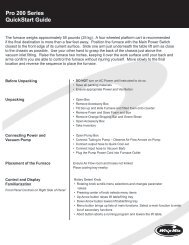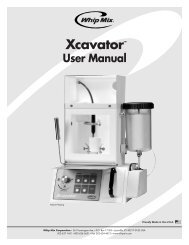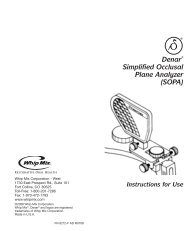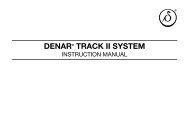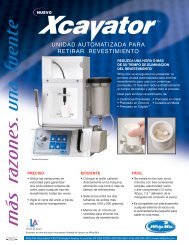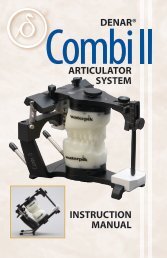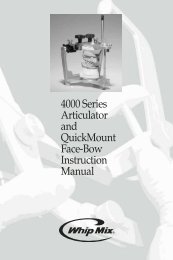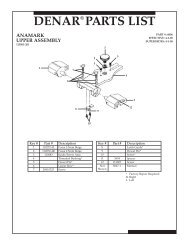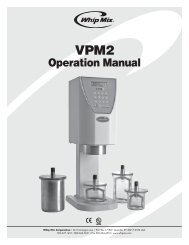Mark II Instruction Manual - Whip Mix
Mark II Instruction Manual - Whip Mix
Mark II Instruction Manual - Whip Mix
You also want an ePaper? Increase the reach of your titles
YUMPU automatically turns print PDFs into web optimized ePapers that Google loves.
fig. 65<br />
fig. 67<br />
With the right index finger, push the foot<br />
of the incisal pin back until it just contacts<br />
the inclined platform of the incisal<br />
table, and tighten the incisal pin foot<br />
lockscrew in that position (fig. 67). By<br />
allowing the incisal pin to come forward<br />
into the centric related position again,<br />
a space will be noticeable between the<br />
foot of the pin and the incisal table – this<br />
space is equal to the horizontal overlap<br />
of the anterior teeth. (fig. 68).<br />
Protrusive Adjustment<br />
To adjust the incisal table for the inclination<br />
of the lingual bearing surfaces of<br />
the anterior teeth, first loosen the incisal<br />
platform and set it back to zero. Do not<br />
tighten the lockscrew. Then, move the<br />
upper bow posteriorly until the incisal<br />
edges of the lower anterior teeth contact<br />
the lingual surface of the upper anterior<br />
teeth just lingual to their incisal edges.<br />
Note that the incisal pin does not touch<br />
the incisal table now (fig. 69). Increase<br />
the angle of the table until it touches the<br />
foot and lock the table in that position<br />
(fig. 70).<br />
Lateral Wing Adjustment<br />
The lateral wings of the incisal table are<br />
adjusted to complement the lateral relationships<br />
of the anterior teeth – most<br />
frequently the vertical and horizontal<br />
overlap relationships of the cuspid<br />
teeth. To make this adjustment, first<br />
remove the incisal table and loosen the<br />
lateral wing lockscrews (fig. 71). Then replace<br />
the incisal table on the articulator<br />
to observe visually the angle to which<br />
the lateral wings must be adjusted to<br />
complement the anterior tooth relationships<br />
in the following manner. Hold the<br />
fig. 66 fig. 68<br />
33





